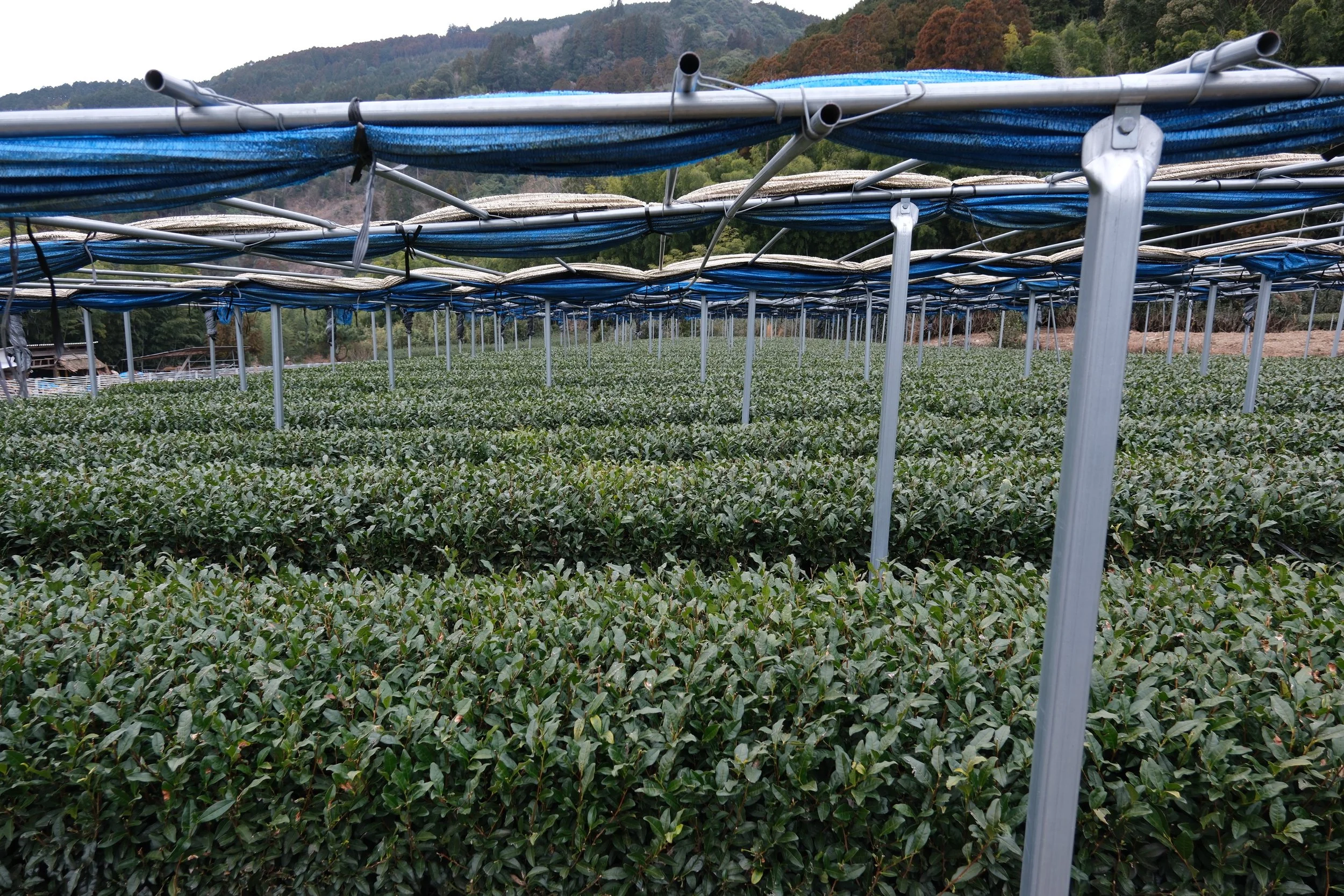Yame Dentou Hon Gyokuro - Mare
Buy this tea here
About Gyokuro:
Gyokuro is known as the king of Japanese green tea, due to the extended shading period before harvest (16-30 days) and the extra care and attention paid during growing, harvesting, and processing. The shading process is very stressful for the tea plant and can cause damage or disease if not done with enough care. Furthermore, many high grade gyokuro are hand-picked rather than scissors or machine cut, and hand processed to avoid damage during what can usually be quite rigorous drying and rolling processes. The amino acids inside the tea - responsible for umami and sweetness - change into catechins under direct sunlight, so shading tea can achieve much higher amino acid levels, which can be isolated in terms of flavour by brewing the tea with low temperature water. There is nowhere more famous in Japan for producing high quality gyokuro than Yame, Fukuoka. In annual nationwide competitions it is not uncommon to see 25-28 out of the highest 30 scoring gyokuro being from Yame. So much so, that Yame has its own government registered growing technique called Yame Dentou Hon Gyokuro. The standards that farmers must meet are stringent and regulated. It was registered on 22nd December 2015, just about 6 months before we opened Cha-ology.
About Yame Dentou Hon Gyokuro:
Must be grown naturally (shizentate)
Must begin shading when 1.5 - 2 new leaf buds are showing
Must shade for at least 16 days
Shading must block at least 95% light (side cover as well as top cover)
Shading material must be rice straw
Must be hand picked
Must be assessed and accepted by the local Yame tea co-operative to be able to use this name
Notes for this particular tea:
This Mare is from Hoshinomura in Yame and won first prize in the 2016 Nihoncha competition. When we visited this tea producer’s factory we saw the award in the president’s office (see pic below)! It is a Yame Dentou Hon Gyokuro, and to be able to use this title the producer (Yamaguchi Shinya) had to follow and adhere to strict guidelines. These inclue ensuring at least 95% of sunlight is blocked during a minimum of 16, but in this case 25, non-direct shaded days with traditional rice straw, and its quality must be checked and accepted by the local tea co-op. Yamaguchi Shinya is widely respected across the tea industry in Japan as one of only about a dozen ‘level ten’ (jū dan) tea masters.
Nihoncha 2016 Award for Mare:
Due to the extreme effort and care taken to produce this tea, please also put in care and attention while brewing. We recommend starting at room temperature to brew an intense liquor. We believe brewing Japanese green tea is a pleasure for all five senses, and this is especially true for a gyokuro like this. Enjoy the incredible aroma that the tea oozes, the deep green of the tightly rolled leaves and watch them unfurl infusion by infusion, climaxed by the explosion of freshness and flavour in each sip.
After your final infusion, the leaves still have a lot to give and it would be a shame to waste the hard work of the farmers and producers. Consider eating them with ponzu (citrus based soy sauce), with sea salt, on their own, or any of the previous suggestions over rice.
By all means experiment to find your personal brewing preferences – our recommendation is:
Brewing guide:
Gyokuro 5 grams
Water 25-50ml
First infusion 25ml @ 20°C for 90sec
Second infusion 35ml @ 65°C for 45sec (pre-heat your cup with hot water first for this infusion)
Third infusion 50ml @ 80°C for 10sec
Storage:
Store in a cold environment (6-10°C) and avoid exposure to light, air, heat, moisture and strong smells - these will degrade your tea. Store in an airtight container or if keeping in the bag, gently squeeze out as much air as possible, seal, and keep in a zip-lock bag in the fridge. Once opened, best consumed within one-two months, or freeze if you wish to keep for longer. If you will be freezing the tea, place in the fridge for two hours to allow the temperature to warm gently before opening.


